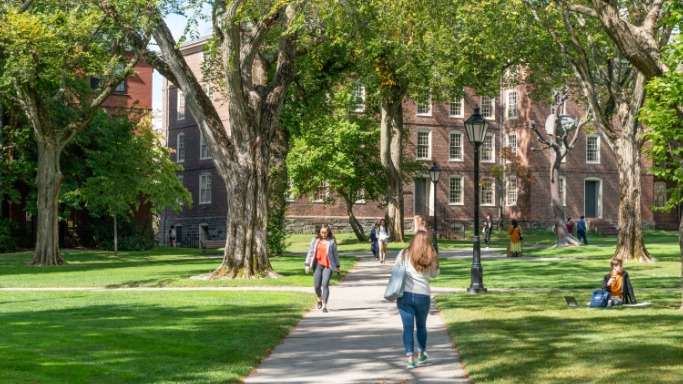As a former managing legal counsel of a state university campus, I follow higher education litigation closely. There’s a new case to watch, one alleging that 16 elite colleges and universities have operated as a “price-fixing cartel.” The case, filed earlier this month in federal court in Chicago on behalf of five former students, claims that the the colleges unlawfully colluded to determine a student-applicant’s ability to pay tuition, which in turn impacts that student-applicant’s financial aid package offered by the university and, ultimately, what the student-applicant pays out-of-pocket.
Henry v. Brown Univ.,et al , proposes an antitrust class action lawsuit specifically against Brown, Caltech, the University of Chicago, Columbia, Cornell, Dartmouth, Duke, Emory, Georgetown, Massachusetts Institute of Technology, Northwestern, Notre Dame, the University of Pennsylvania, Rice, Vanderbilt and Yale.
Essentially alleging lock-step financial aid packaging by the defendant-universities, the complaint argues that an applicant is deprived of a free, competing marketplace for financial aid offers to determine her school of choice. In effect, members of the alleged “cartel” are prohibited from offering more generous financial aid than other schools.
At issue is whether the universities are acting in accordance with an antitrust exemption under Section 568 of the Improving America’s Schools Act of 1994. The exemption allows certain agreements between two or more institutions of higher education, at which all students are admitted on a need-blind basis, with respect to awards of need-based educational aid.
Purporting to act in accordance with Section 568, the defendant-universities created and joined the 568 Presidents Group. Not all universities participate in the 568 Presidents Group. For example, schools that do not follow need-blind admissions policies would not affiliate. Others, including Harvard, never joined because, according to the lawsuit complaint, the “cartel’s” financial-aid formula would have yielded financial-aid packages that were smaller than what Harvard wanted to award. The complaint quotes anonymous university presidents stating that the “cartel” is an “insider’s game” that belongs to a “bygone era” and that schools leave the “cartel” to offer more financial aid, opining that the “notion of a collective that would constrain money is counter to public policy.”
Unique to this antitrust case is the allegation of wide-open collusion, evidenced by the 568 Presidents Group and its website. Bloomberg Law notes that,
[unlike other] corporate antitrust cases, the lawsuit appears to rely mostly on public documents to allege a conspiracy hiding in plain sight. It accuses the schools of coordinating their scheme through formal membership in the “568 presidents group,” which it says was formed in 1998.
Although the group’s website suggests its mission is to promote need-blind admissions and ensure compliance with Section 568, the truth “is the opposite,” according to the complaint. Because membership is a matter of public record, it’s possible to trace which colleges have been parties to the alleged conspiracy over time, according to the suit, which states when each of the schools allegedly joined or left the group.
The 568 Exemption applies only to need-blind admissions and precludes any school from taking into account the financial circumstances of a student or her family in making admissions decisions. Here’s Bloomberg Law again:
…more than half of the schools have given preferential treatment to wealthy applicants by tilting the scales to favor the children of “past or potential future donors” and “through a largely secretive practice known as ‘enrollment management,’” according to the complaint.
“Need-blind” admissions occur when the university determines an applicant’s admission to the university without considering whether or not that applicant (and her family) can afford to pay the university’s tuition but rather based only on the applicant’s ability to do the work of that school. Once admitted, the applicant (and her family) complete financial aid questionnaires where the college allocates the cost of attendance, meaning how much tuition the student is able personally to contribute and how much the university will provide in financial aid packages such as grants that do not need to be paid back. Obviously, the more generous the financial aid package, the less net tuition the student must pay or borrow outright.
It is contested whether admission decisions can truly be need-blind. In its review of the new antitrust case, CTAS Higher Ed Business references a Twitter thread by Jon Boeckenstedt, well-known education blogger and Vice President for Enrollment at Oregon State,
who is seemingly dismayed by the constant overexposure of highly selective schools (we sympathize) and takes a jaded tone: “I’ve been saying for years that need-blind admissions does not exist. It’s not a luxury bestowed upon the vast majority of colleges, for one thing; and at the places that can afford it, well, you can see need in every line of an application [emphasis added].”
The astronomical endowments of the defendant-universities cannot be overlooked when alleging price-fixing detrimental to applicants. The complaint calls out each school’s endowment, and they range from Georgetown’s $2.6 Billion low to Yale’s $42 Billion high. Collectively, the 16 university endowments total over $209 Billion.
Obviously, these elite universities have the financial ability to grant financial aid packages within America’s free market system of competition. We do not need a “Uni”-versity from our nation’s elite colleges. We need market checks on total tuition pricing, financial aid packages, and admissions.

